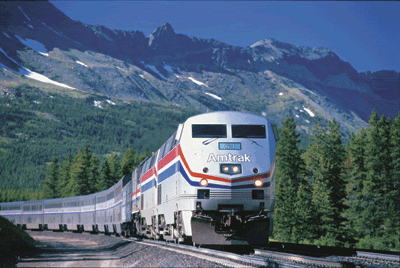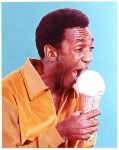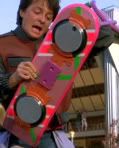
Once upon a time, land travel in America was limited to horses, slaves, and trains. Trains were the fastest and created the most smoke, and so of course they were the most popular. At the peak of train travel, there were over 65,000 passenger cars in operation, taking passengers to and back to fro with their daily newspapers and polite conversations about foreigners. Then one day, a man drove past his local train station in a newfangled automobile device, his arm thrust barbarically out the window, his driving glove bent into a shape allowing him to display his middle finger most prominently. "Trains suck!" he yelled, speeding past at an awe inspiring 13 miles per hour. The crowd gasped, the engineer jumped onto his slave and gave chase, police dove into their police train, but by the time they got the steam powered sirens going, the man was long gone. The engineer returned, defeated, tied his slave to a post, and reported sadly that there was no unique set of letters and numbers with which to identify the perpetrator. "Somebody needs to invent a plate of sorts," he said, "with which a unique licensed number can be identified."
Which brings us to today's invention: AMTRAK.
The popularity of the automobile, as demonstrated above, gave a new freedom and individuality to travel that the trains couldn't provide. As automobiles became cheaper, safer, and more reliable, trains became lamer, clunkier, and more for the poor foreigners which the respectable passengers of a passing age used to describe politely on their daily commutes. In addition, the US government nationalized the railroad industry for World War I (for more info on World Wars A-H, please click here) between 1910 and 1921, undermining the railroad companies' ability to make a profit, preventing them from investing in passenger rail facilities. Labor costs increased, and with them passenger fares, causing even more automobile converts. By 1965, the number of passenger cars in operation was down from it's 1929 peak of 65,000 to a meager 10,000. The rails that ran through various communities were heavily taxed, so the decline in customers made solvency nearly impossible. The train industry was doomed. Tear down those tracks, America, and make room for the flying car!
Mr. Nixon, save our trains!
In 1970, Richard Nixon signed The Rail Passenger Service Act into law, a bill which would allow government funding to assure the continuation of passenger trains. This created the National Railroad Passenger Corporation, a hybrid public-private entity that would receive taxpayer funding and resume operation of intercity rail travel. The first working name for the NRPC was Railpax, but by the time the corporation began operation on May 1, 1971, the name was changed to Amtrak, as we know it today.
One last hurrah!
Nobody really expected the corporation to work. Richard Nixon and his staff viewed Amtrak as one last hurrah for the passenger train industry before it quietly disappeared, unnoticed by the public as they flew past in their Ford Fairlane Flying Model T's. Proponents of the act felt that the corporation could go private again after a few years of government assistance. Both sides were wrong, agreeing to disagree in an alternate version of Sirens of Titans where arm wrestling and nude oil wrestling are totally acceptable olympic sports.
Today, the US ranks near the bottom in terms of rail usage per population. And yet, Amtrak lives on. In 2008, Amtrak served 28.7 million customers, representing six straight years of record ridership. As long as the flying car still continues to sit around non-existent, Amtrak has no where to go but up. Shine on, you crazy government owned train corporation!








No comments:
Post a Comment